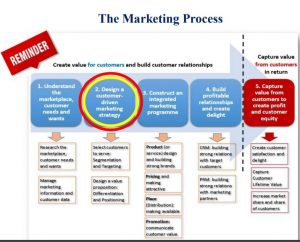Marketing Principles and Theory Notes (Grade A)
Summary:
These Marketing Principles and Theory Notes explore the concept of customer value-driven marketing strategy. In Part 1, the marketing process is discussed, highlighting the importance of designing strategies that target specific market segments based on their unique needs and characteristics. The four major steps in developing a customer value-driven marketing strategy are introduced: market segmentation, targeting, differentiation, and positioning. Part 2 delves into market targeting strategies, presenting four approaches: undifferentiated marketing, differentiated marketing, concentrated marketing, and micromarketing (including local and individual marketing). The advantages and potential drawbacks of each approach are outlined. Finally, in Part 3, the focus shifts to differentiation and positioning. Five overall positioning strategies are examined: more for more, more for the same, the same for less, less for much less, and more for less. Examples are provided to illustrate each strategy. Overall, this text provides insights into the key elements and strategies involved in designing customer value-driven marketing approaches to effectively target and serve specific market segments.
Excerpt:
Marketing Principles and Theory Notes
School of Business
Department of Marketing
BMKT300 – Marketing Theory and Principles
Chapter 7 | Part 1
Customer Value-Driven Marketing Strategy
Objectives:
• Define the major steps in designing a customer value-driven marketing strategy: market segmentation, targeting, differentiation, and positioning.
• List and discuss the major bases for segmenting consumer markets.

Marketing Principles and Theory Notes
Marketing Strategy
• Companies can’t appeal to all buyers in the market, or at least not in the same way.
• Reasons:
o Buyers are too numerous.
o Buyers are widely scattered.
o Buyers are varied in their needs and wants.
o Companies vary in their abilities to serve different market segments.
Companies must identify the parts of the market they can serve best and most profitably, by designing customer value-driven marketing strategies that build the right relationships with the right customers.
Customer Value-Driven Marketing Strategy
• With technology advances making it simple to contact many customers at once, most companies have moved away from mass marketing and toward target marketing: identifying market segments, selecting one or more of them, and developing products and marketing programs tailored to each


Reviews